
Range Rover Sport PHEV review 2023

Introduction
The arrival of a new Range Rover Sport is big news. Here is one of the most instantly recognisable luxury SUVs on the market, and a car that’s become so popular with the rich and famous that it’s almost synonymous with high-end luxury SUVs. And when there’s a company car-friendly plug-in hybrid version, the news gets even more interesting.
But the new Range Rover Sport is quite different from its predecessor, offering an even more opulent interior, fresh technology and a clean new look, as well as a host of new powertrains. For many customers, the plug-in hybrids will be the most interesting of the bunch, providing economy and efficiency thanks to their big batteries and small but mighty engines. The question is, are these new Range Rover Sports all they’re cracked up to be?
Select's rating score* - 4.4 / 5
At a Glance
It’s instantly apparent that the new Range Rover Sport carries on where its predecessor left off in terms of image and attitude. Yes, Land Rover has updated the styling to bring it into line with the larger Range Rover, but the Sport still has that quiet, clean, modern style that has made it such a hit with affluent customers up and down the country.
The interior, however, has made a huge step forward, with glorious style oozing from every pore in that sumptuous leather. The clean, fresh cabin feels airy and light, too, while plush seats and some gorgeous materials finish off a fabulously modern interior. There are still one or two quality issues that need to be ironed out, but it looks so good you can forgive it plenty.

Part of the reason why it’s so attractive is the new Pivi touchscreen in the middle of the dash. It sits there like a giant iPad, offering sharp graphics and much-improved responses, although the brightest mode makes it difficult to make out some of the icons. We prefer the night mode for clarity.
Naturally, despite all this luxury and the efficient plug-in hybrid systems, this is still a car that’s hugely capable off-road. Land Rover has maintained and improved on the old car’s credentials with this new model, and it’s more than happy to climb every mountain or ford every stream.
Yet it’s a capable road car, too, thanks to a whopping six-cylinder petrol engine and impressive air suspension that does a great job of isolating you from the bumps in the road. Yet when you put it into Dynamic mode, it suddenly becomes a sportier car altogether, ditching comfort (slightly) in favour of improved body control. It’s a remarkable technical achievement.
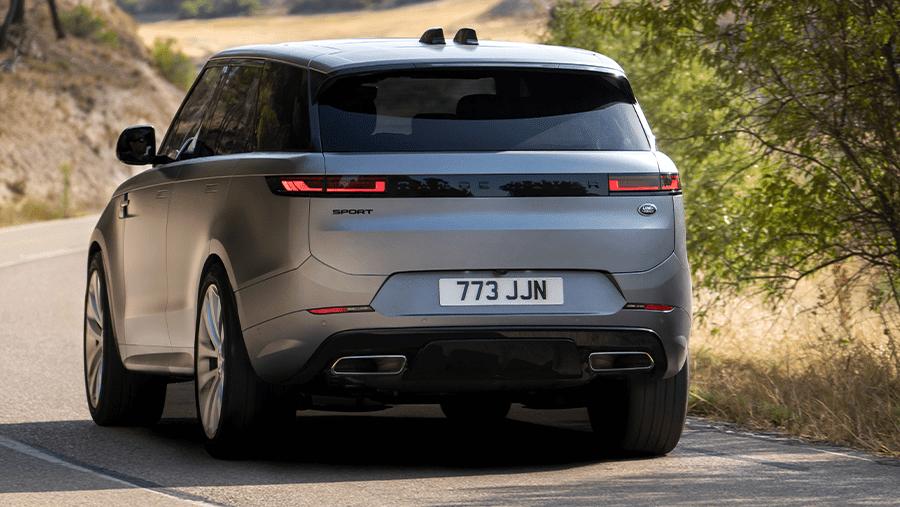
Key Features
The new Range Rover Sport brings with it plenty of fresh thinking, and the new interior is an undoubted highlight. It looks beautiful from every angle, and it feels light and airy – particularly with a pale upholstery choice. The design is clean and minimalist, with just a few buttons on the dash and steering wheel, while most functions are taken care of by the massive central touchscreen and the digital instrument display. There are a few quality issues, including the steering wheel switchgear, but the design is brilliant and the touchscreen is far better than that fitted to the old Range Rover Sport.
Also of note is the plug-in hybrid system, which is one of the best in the business. Even the ‘basic’ P440e is a peach, with the massive battery providing a real-world range of around 50 miles and an official range of 70 miles. Combine that with a naturally smooth straight-six petrol engine and you’ve got one of the best hybrid systems on the market, even if the engine doesn’t sound quite as good as the similar unit in the BMW X5 50e.

Range & Batteries
The hybrid Range Rover Sport comes with an enormous battery as standard. At 38.2kWh, it’s almost as big as the battery fitted to a basic Nissan Leaf, and that’s quite some going. However, just 31.8kWh of that capacity is available for use when driving solely on electric power, so the Range Rover Sport’s range is not quite as impressive as that of the much lighter Leaf.
Still an official figure of 70 miles is not to be sniffed at, and most customers should manage 50 or so in the real world without too much hassle. Be sure you have all the info and check out our guide to official v. real-world battery range.

Performance & Drive
Range Rover Sport customers get a choice of two different plug-in hybrid engines, with the less powerful P440e offered alongside the more potent P510e. Both systems combine the same massive 38.2kWh battery and electric motor with a 3.0-litre straight-six petrol engine.
As the names suggest, the two systems produce 440hp and 510hp respectively, and both are more than powerful enough to make brisk progress. Even the P440e can get from 0-62mph in less than six seconds, while the top speed is 140mph. Opting for the more powerful P510e cuts the 0-62mph time to 5.4 seconds, while the top speed increases to 150mph.

But performance isn’t really the forte of the hybrid Range Rover Sport, despite its name. Instead, it’s a hugely comfortable mode of transport, managing to smooth off the worst of the imperfections in the road despite the car’s immense weight. The ride is at its best on the motorway, where the Range Rover Sport seems to glide over the surface, but it never gets uncomfortable even on scarred asphalt.
Yet when you put the Sport in Dynamic mode, it becomes a completely different animal. Normally, the brakes feel a bit sloppy, as does the body control, but the Dynamic setting makes it feel much tauter and, well, dynamic. It’s still a big, heavy car, but it manages to corner at almost ridiculous speeds with complete control and grip. Perhaps it isn’t as agile as a Porsche Cayenne GT or a Lamborghini Urus, but then it doesn’t have to be.
That’s because the Range Rover Sport has off-road ability that few other cars can match, offering drivers the capacity to wade through water almost a metre deep or to climb and descend on steep slopes. There’s a clever traction control system, too, giving drivers the ability to find the maximum traction available on any given surface, and with the right tyres wrapped around those big alloys, the Sport will go pretty much anywhere.

Charging
To make the best of any plug-in hybrid, you’ll need to do lots of charging at home. You can charge from a three-pin plug if you like, but it’ll take all night (and possibly even longer) to do so – particularly with the size of battery found in the new Range Rover Sport PHEV. If you get a 7kW ‘wallbox’ domestic charger, however, you can cut that time to around five hours.
And if you plug in to a 50kW rapid charger such as the ones found in car parks and the like, you’ll be looking at an hour to get from empty to 80% charged. Need to get the most out of every charge? Be sure to check out our guide on picking your ideal electric car charger.
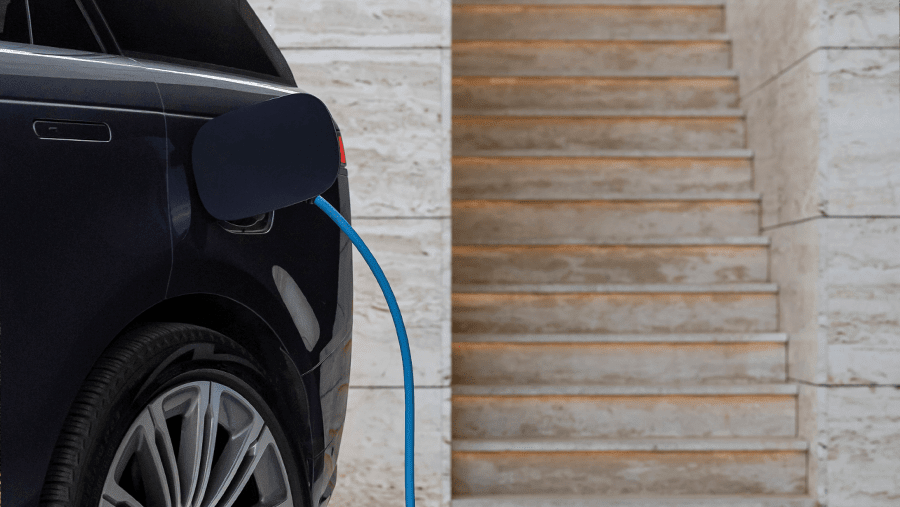
Running Costs & Emissions
The running costs for a Range Rover Sport PHEV will rather depend on your lifestyle, and some will undoubtedly be better served by one of the Range Rover Sport mild-hybrid diesel engines. However, if you live in or near a town centre, can charge at home and the majority of your journeys are less than 30 miles or so, the plug-in hybrid Range Rover Sport will serve you well. Admittedly, the official three-figure economy is so ludicrous we won’t even report it here, but there’s no doubt a Range Rover Sport could be surprisingly efficient in the right conditions.
Most PHEV customers, though, will be more interested in company car tax than fuel prices, and the hybrid system is very good for that. With an official electric range of more than 40 miles and such low official emissions, the tax rate is a fraction of what it would be for a diesel. And you’ll have to do a lot of long journeys before you make that money back.

Interior & Technology
The Range Rover Sport’s cabin is nothing short of glorious, at least from a distance. The clean, stylish design is a huge improvement on that of the old car, and the selection of interior options only adds to the modernity. Wherever you sit, the cabin feels light and airy, particularly if you go for the optional panoramic roof, which increases the already plentiful sense of space.
But key to the Range Rover Sport’s modernity is the new central touchscreen, which can only be described as “huge”. Almost square in proportions, it measures 13.1 inches from corner to corner, and it uses Jaguar Land Rover’s latest software to offer a smoother and more intuitive design than ever. Admittedly, the bright mode makes some of the icons harder to see, but the menus are fairly logical and the screen responds sharply. And the easier-to-use dark mode still looks pretty stylish.
As usual, the screen comes with all the mod cons you expect, including the Apple CarPlay and Android Auto smartphone connectivity systems, satellite navigation and a reversing camera. You get all the usual media stuff, too, including Bluetooth connectivity and a Meridian sound system.

Then there’s the comfort. All that space and style is complemented by huge seats with ample padding and a remarkably ideal driving position, which means whiling away the motorway miles in a Range Rover Sport is anything but a chore. Even sitting in city centre traffic is a surprisingly relaxing experience.
But it isn’t all sunshine and rainbows in the new Sport. Beneath the surface, issues remain rife, including some questionable build quality that’s only lightly masked by the materials on display. For example, parts of the centre console feel quite cheap beneath the lovely leather, and the buttons on the steering wheel feel as though they came from a child’s toy. Not only do they move an unsettlingly large distance when pressed, but they feel plasticky and agricultural.

Practicality & Boot Space
As you would probably expect of a car this size, the Range Rover Sport is remarkably spacious. In fact, although it has a smaller footprint than the ‘full-fat’ Range Rover, interior space is not that different. For those in the front, there’s plenty of elbow room and lots of adjustment in the seats, both of which are spectacularly comfortable. There’s a huge amount of rear space, too, with ample head- and legroom for even tall adults. And the central seat is also habitable, although it’s nowhere near as comfortable as its neighbours.
Similarly, the boot is cavernous, with almost 650 litres of luggage space on offer. And that’s before you fold down the back seats. No matter what you carry, the Range Rover Sport should be able to deal with it, particularly when you can still drop the rear bench to accommodate even more luggage, and you can fit a roof rack. It’s worth remembering, though, that the car is already about six feet tall, and adding height might make multi-storey car parks entertaining.

Safety
The new Range Rover Sport comfortably passed the Euro NCAP’s crash test procedure, earning itself a maximum five-star rating. Although it’s a big, heavy vehicle, it still managed a respectable 69% for protection of vulnerable road users, and it scored more than 80% in every other area. While some cars have managed even more impressive scores, the Range Rover Sport is still as safe as houses.
That’s partly down to the array of standard safety systems fitted to every example. Autonomous emergency braking, which can slow or stop the car if the driver fails to respond to a hazard, is fitted as standard, along with lane-keeping assistance and blind-spot monitoring, which tells you when a vehicle has drifted into the hard-to-see areas over your shoulders.
Other standard safety gizmos include adaptive cruise control that maintains a safe distance to the car in front and parking sensors in the front and rear bumpers, not to mention the 3D Surround Camera that offers drivers a view of all angles of the vehicle when parking.
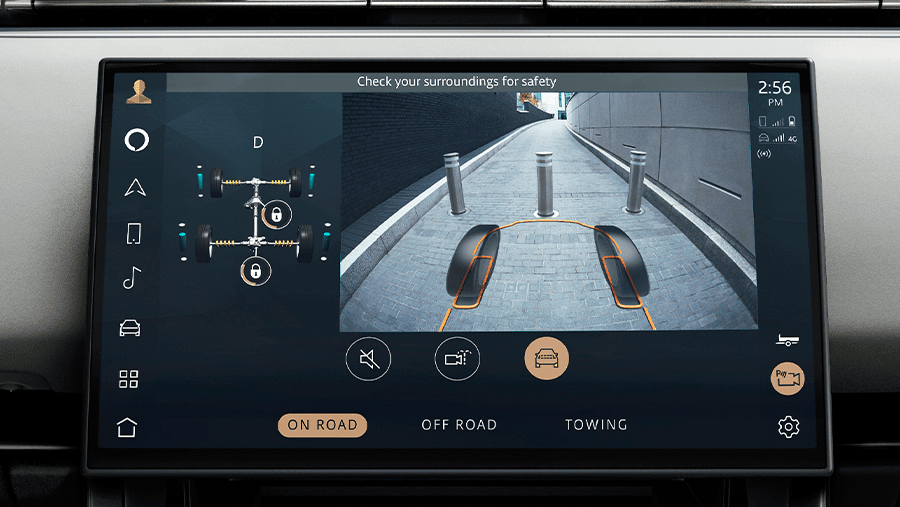
Options
Plug-in hybrid Range Rover Sports come in a choice of three different trim levels, but all three are sumptuously equipped. Even the most basic versions – if you can call them that – come with all the mod-cons, including leather seats, 21-inch alloy wheels and a Meridian sound system. It also gets 20-way electric heated memory front seats and heated power recline rear seats, as well as the digital instrument display and the massive 13.1-inch touchscreen.
Upgrade to the Dynamic SE and you get much the same level of standard equipment, but it gets dark alloy wheels and bronze exterior trim accents. The range-topping Autobiography version provides even more equipment, offering larger 22-inch alloy wheels and more upmarket seats, plus smarter leather upholstery. In truth, though, the base model with some choice options will be more than luxurious enough.
Aside from colours and upholstery choices, which will be a matter of personal taste, we’d recommend the panoramic roof, which makes the interior feel lighter and more spacious. The head-up display that’s projected onto the windscreen might appeal to some customers, too, as may the soft-close doors, low-ratio gearbox and the configurable terrain response settings, particularly for those who’ll use the off-road capability.

Rival Cars
When the Range Rover Sport was new, rivals were few and far between, but these days the market is saturated with alternatives. Not only could you choose a BMW X5 or an Audi Q7, but you could also go for a Mercedes-Benz GLE, a Genesis G80 or a Volvo XC90. They all have their appeal, but the X5 is arguably the best all-rounder, offering more impressive driving characteristics than any of its rivals and giving customers an appealing mix of quality and luxury.
The Q7 is even more rock solid inside, while the GLE or XC90 will be the obvious choices for those seeking comfort and style. The little-known Genesis, meanwhile, fights back with a glorious interior and plenty of space.
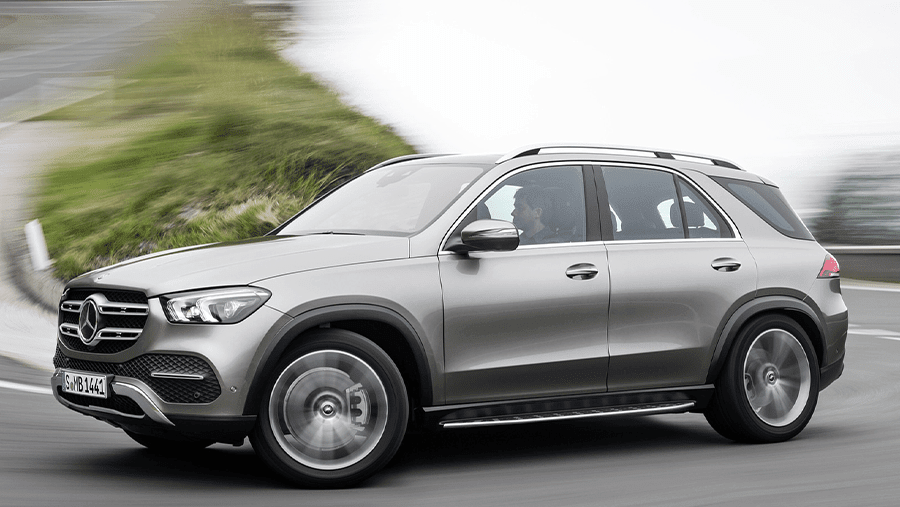
But the most obvious and most accomplished rival for the Range Rover Sport is the Porsche Cayenne, which comes with a similarly wide range of powertrains, including a small selection of hybrids. Admittedly, the Range Rover’s hybrid systems are arguably more appealing to company car drivers, but the Porsche’s performance-orientated character is carried over from the sports car division and it makes for an SUV that’s great to drive. The Cayenne is beautifully made, too, and it’s a very difficult car to beat.
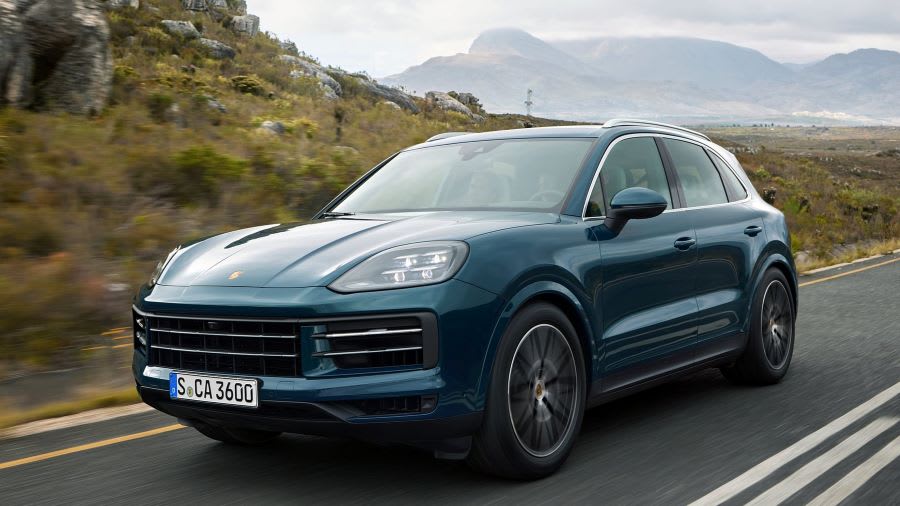
Verdict & Next Steps
The Range Rover Sport isn’t perfect – particularly in hybrid form – but it’s still a very likeable car. Even the most ardent Porsche fan would admit the interior is gorgeous, and though the styling is quite subjective, we think it’s still a good-looking thing. Admittedly, it isn’t as sporty as the name suggests, but there’s no arguing with the comfort or the refinement, particularly in everyday driving conditions. For those looking at company-funded wheels, the PHEV is the obvious version to go for, and those customers are bound to be happy with their choice.
Where to next?
View our latest Land Rover Range Rover Sport lease deals - from just £985.13 per month inc VAT**
Looking for a great leasing deal? Check out our incredible range of Special Offers
New SUV? Read our latest Car Reviews and find the right model for you
Want to know more about leasing? Take a look at our comprehensive Leasing Guides
Interested in everything motoring? Why not catch up on all the latest Car Leasing News.
*Score based on Select’s unique meta score analysis, taking into account the UK’s top five leading independent car website reviews of the Land Rover Sport
**Correct as of 18/04/2023. Based on 9 months initial payment, 5,000 miles over a 48 month lease. Initial payment equivalent to 9 monthly payments or £8,866.17 Ts and Cs apply. Credit is subject to status.





















